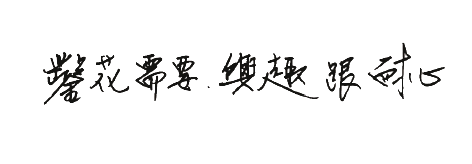鑿花之美 ─ 林天生

The Beauty of Wood Carving
Lin, Tien-Sheng
Wood carving refers to the traditional decorative wood sculpture technique. Traditional Chinese wooden furniture and temple architecture have showcased the life aesthetics and art value through the elaborate carving of artisans. Most Chinese furniture craftsmen who came to Taiwan during Qing Dynasty reign had mastered all techniques, including planning, cutting, drilling, jointing, carving, lacquer painting, and lock installing. During the Japanese colonial period, the woodworking industry in Daxi had diversified in areas of expertise that worked together for mass production. The crafts of wood carving, lacquer painting, and furniture making had prospered and matured respectively, and were passed down through apprenticeship seperately. At the heyday of Daxi's wood industry, wood carving became a top career choice.
After graduating from junior high school, Lin, Tien-Sheng took apprenticeship under master Huang, Chi-Jung. After becoming a master himself, Lin worked as a wood carver, first at Lao Chao Yang, and later at Hsieh-Ta Woodcraft Shop. He established his own studio at the age of 25. During the years when Daxi's woodworking and Chinese altar table industry went into decay, Lin also manufactured other wooden products, but never left the wood carving profession. He specializes in carving plants, flowers, dragons, phoenixes, and human figures. In Daxi's Chinese and Red wood furniture industry, Lin, Tien-Sheng is widely recognized as the grand master of wood carving.
In 2010, Lin's wood carving art craft was registered as Taoyuan's cultural heritage. The wood carving master of the time was honored yet again for his spectacular techniques and precious legacy.
鑿花是傳統的細木雕刻,傳統漢式木傢俱、廟宇建築透過鑿花匠司的精湛雕琢,呈現生活美學與藝術價值。清治時期來臺的唐山細木師傅大都精擅所有技法,包括刨削、裁切、鑽孔、打榫、鑿花、塗漆、安鎖片等。日治時期,大溪木業開始分工合作的量產時代,鑿花、塗漆、木器製作鼎足而立,也逐漸形成專精一門的師承。在大溪木產業盛極一時的年代,鑿花也就成為優選的學藝之路。
拜師學藝與堂兄弟成為師兄弟
林天生國中畢業後,學了幾天汽車修護,因興趣不合而放棄。家裡那時有兩個堂兄弟在鑿花匠司黃棋榕匠司門下當學徒,伯母建議林天生不妨試試,於是就這樣拜師黃棋榕。那時的學徒制還是老傳統:吃住在師父家,有一點零用錢,一個月理一次髮也是師父支付。一樣從打雜做起,靠自己眼尖看師父的手法學工夫,然後就是利用下工後的晚上勤加練習,所謂「師父領進門,修行在個人」。
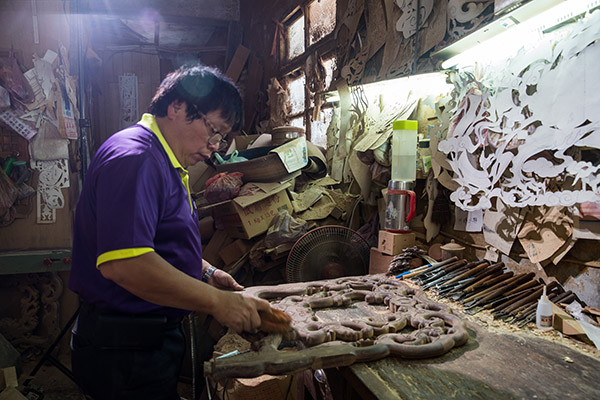
每個工序都馬虎不得
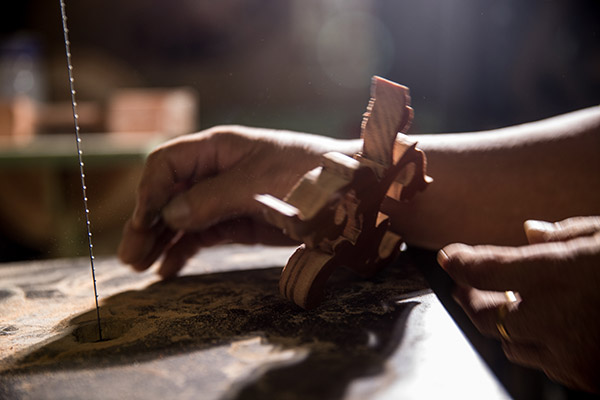
線鋸之後初步成型
一身絕技,雕琢精緻文化產業
勤奮與認真,林天生學徒時期就表現出色,出師後被引薦到阿梨師的「老朝陽」店裡工作,直到當兵。退伍後,在阿維司的「協大木器行」繼續兩三年的鑿花工作。二十五歲自組工作室,手下師傅曾經高達七、八位。在大溪木器、佛桌產業衰頹的那幾年,林天生也兼做其他木製品,但不曾離開鑿花專業。他擅長花草、龍鳳、人物等漢式雕花,在大溪唐木、紅木家具文化產業裡,目前能做細木鑿花的匠師,林天生是公認的首選。
鑿花必須繪畫草圖貼在木頭上描圖,或在木頭上構圖。林天生求學時對畫畫很有興趣,從手繪稿到直接在木頭上運筆的功力,都可見基本功的底子紮實。鑿花講究精緻細膩,在木屑裡一刀一刀雕琢,需要很大的耐心。雖然機械鋸臺取代傳統線鋸,但鑿花在木藝裡還是最精工的雕鐫技藝,對於傳承隱憂,林天生也只能期待後繼有人。
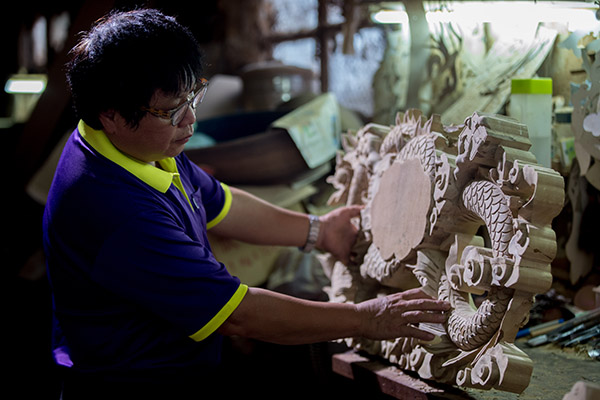
端詳未完工的作品
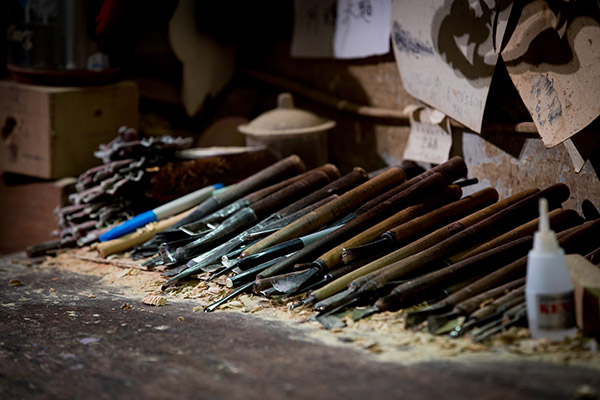
鑿花工具
登錄文化資產的殊榮
民國99年,林天生以鑿花工藝獲登錄桃園縣文化資產,登錄理由精簡扼要的推崇一代鑿花匠司的精湛技藝與珍貴傳承。
一、保有細木雕的傳統技法,完美呈現於其 作品上,手稿板式亦有神韻。
二、具優秀傳統雕刻技法,作品精美具藝術 價值堅持傳統本業傳承。
三、鑿花技術表現十分細緻優美,值得傳承。
四、以花草、龍鳳、人物為主題的雕花,雕 工流暢細緻,展現傳統藝術之優秀。
五、具地域木作藝術之特性,與大溪木雕傳 統文化緊聯。
民國107年大溪生態木藝生態館「木藝生根 產業協力」展覽,林天生以鑿花的工藝之精與藝術之美,獲邀參展,再現風華。
